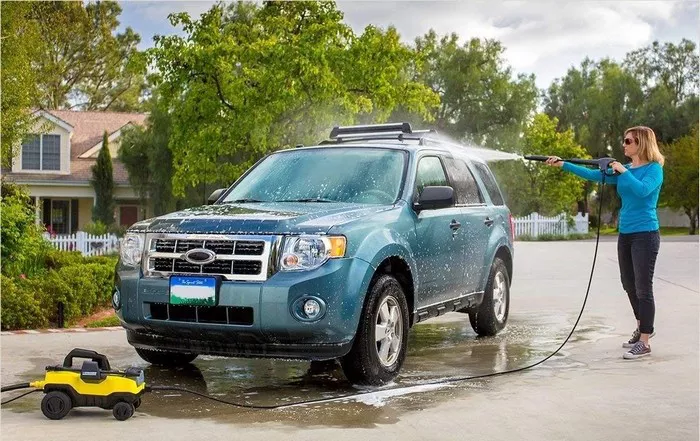PSI, or pounds per square inch, is a unit of pressure commonly used to measure the force exerted by a fluid, such as water, against a surface area. In the context of car washing, PSI refers to the pressure generated by a pressure washer’s pump to propel water through the nozzle. Understanding PSI is crucial as it determines the effectiveness of the cleaning process and, more importantly, plays a significant role in preventing damage to the car’s paint and sensitive components.
Ideal PSI Range
The ideal PSI range for car washing falls between 1200 and 1900 PSI. Within this range, the pressure is sufficient to remove dirt, grime, and other contaminants from the car’s surface without causing damage. However, exceeding 2200 PSI can pose risks to the car’s paint. High-pressure water jets can strip away paint, cause scratches, and even dent the bodywork. Additionally, excessive pressure may force water into sensitive areas, leading to electrical damage or corrosion.
Car Paint Safety
Preserving the integrity of the car’s paint is paramount during the washing process. Using the correct PSI ensures that dirt and debris are effectively removed without compromising the paint’s finish. Maintaining the recommended PSI range protects against unnecessary wear and tear, prolonging the lifespan of the paint job and preserving the vehicle’s aesthetic appeal. Furthermore, it minimizes the risk of damaging sensitive parts such as trim, seals, and electrical components.
Comparison of Different PSI Levels
Different car washing methods employ varying levels of PSI, each with its advantages and limitations. A standard garden hose typically delivers around 40-80 PSI, suitable for rinsing but inadequate for removing stubborn grime. Electric pressure washers typically range from 1000 to 2000 PSI, offering sufficient power for most car washing tasks while remaining gentle on the paint. Self-service car washes may feature high-pressure systems exceeding 2000 PSI, which, if not used cautiously, can cause damage to the vehicle’s exterior.
Tips for Reducing PSI
If a pressure washer’s PSI exceeds the recommended range, several measures can be taken to reduce the pressure without compromising cleaning effectiveness. Switching to a wider nozzle attachment disperses the water over a larger area, reducing the force exerted on the surface. Alternatively, adjusting the distance between the nozzle and the car, or lowering the water flow rate, can also decrease PSI. Experimenting with different techniques allows users to find the optimal balance between pressure and cleaning power.
Practical Advice
When using a pressure washer to wash a car, safety precautions must be observed to prevent accidents and damage. Always maintain a safe distance of at least 12-18 inches between the nozzle and the car’s surface to minimize the risk of paint damage. Hold the wand at a slight angle to the surface rather than directly perpendicular to prevent water from penetrating gaps and seams. Additionally, start with the lowest pressure setting and gradually increase as needed, taking care to avoid sensitive areas such as windows, mirrors, and trim.
Conclusion
In conclusion, understanding and controlling PSI is essential for effective and safe car washing. By adhering to the recommended PSI range and employing proper techniques, car owners can achieve a clean and pristine finish without compromising the integrity of their vehicle’s paint and components. Taking the time to master PSI management ensures a thorough and gentle cleaning process, preserving the beauty and value of the car for years to come.


